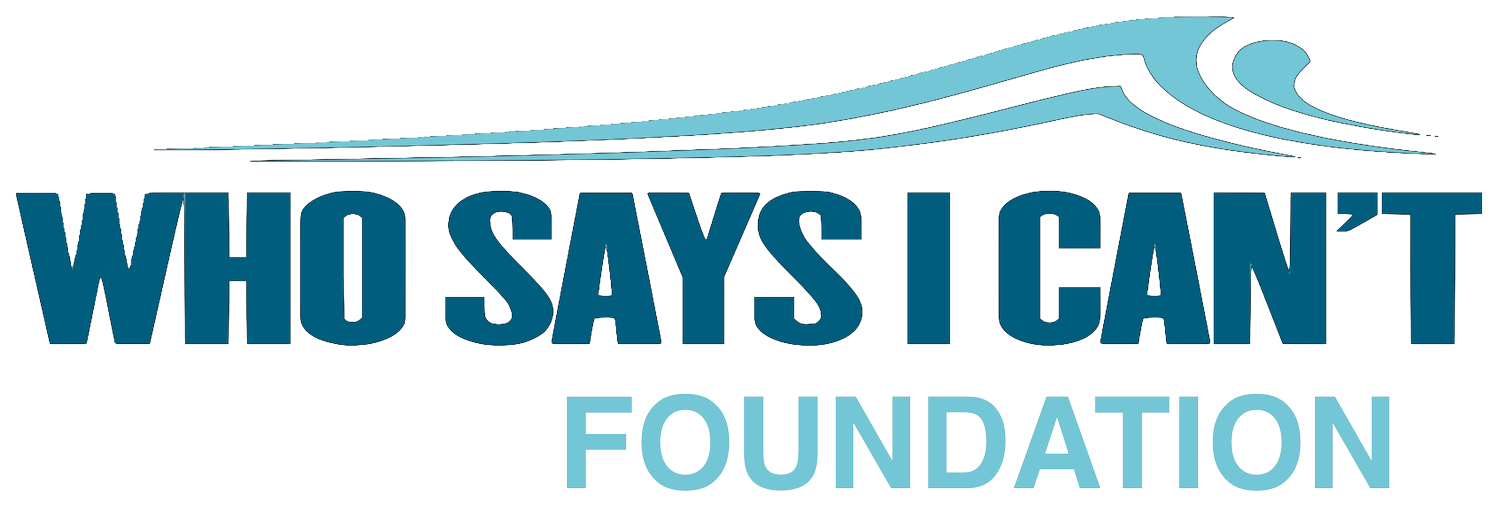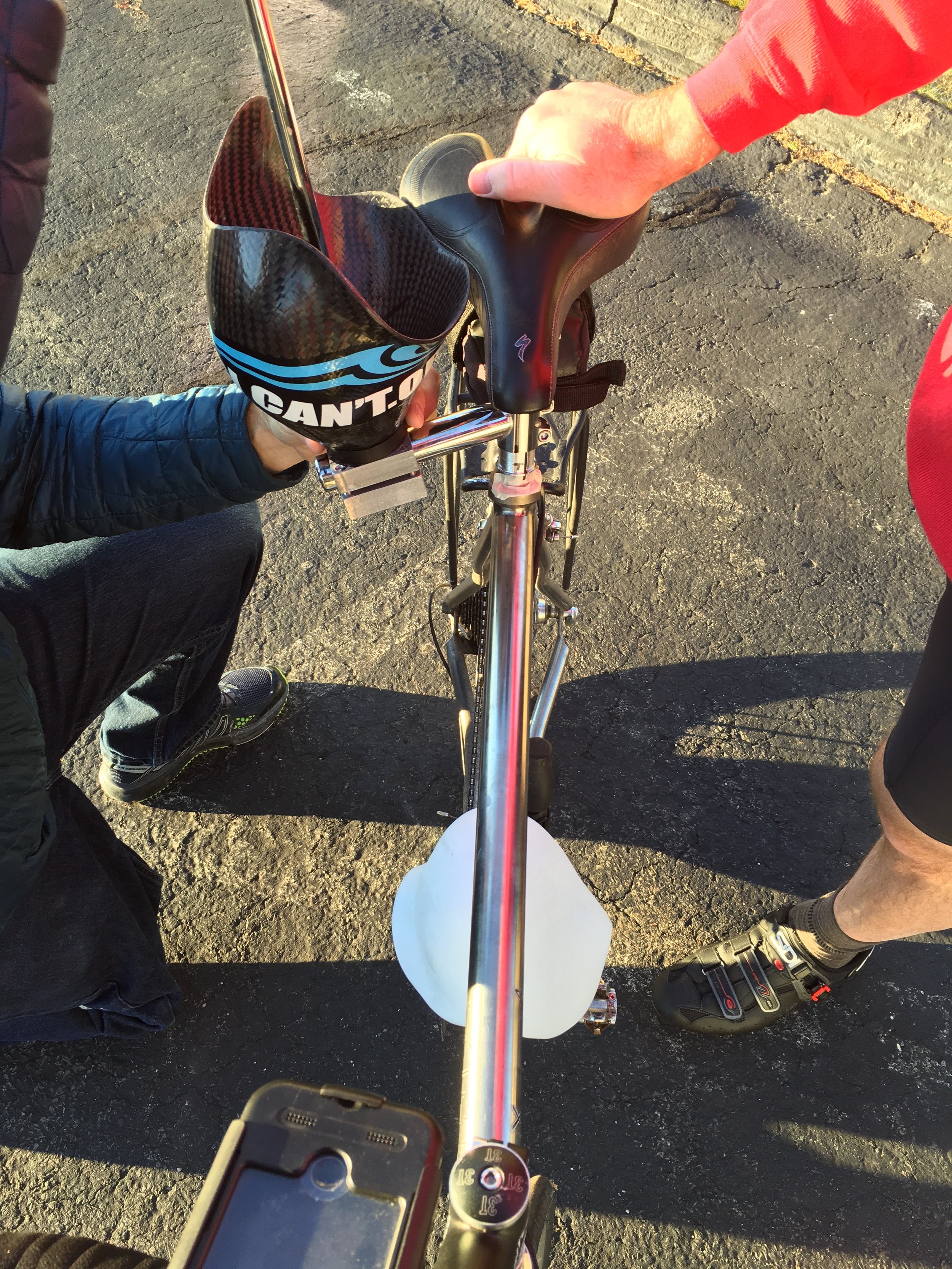
Our Equipment
Amputee biking
For an above knee amputee, biking does not work when wearing one’s walking prosthesis because without a knee the leg does not help power the bike and in a fall, the leg could dislocate that hip. However sitting on the small bike seat with just a stump on one side is uncomfortable after even half an hour of riding. Plus the balance on the bike is challenging with so much weight on one side.
This invention is a socket mounted on the seat post right next to the seat. With sewn up bike shorts you put the stump into this socket and are now able to spread out your weight evenly across the bike and one’s butt making for a much more comfortable ride. This unit has been used on many century rides.
Amputee SUP
Paddleboarding is not conducive for an amputee to try on just one foot. It requires one’s weight to be spread out over the width of the board. But the knee is not really necessary and knees that are muddy water proof are very expensive. This is a simple water proof socket on a peg leg that ends in a wide foot with a very non-skid surface. One gets on from the back of the board (not difficult even from in the water) sliding up the back of the board holding the paddle.
Once the good foot is in place, in one smooth motion, stand up using the paddle for some stability. Once up make sure the feet are spaced well apart, and start paddling. This leg had allowed its owner to go miles even with a large dog on the front of the board.
Enabling Technologies Bi-Ski
A bi-ski is a sled for someone who can not ambulate at all but who wants to be part of a skiing outing. The disabled person is carefully fastened into the sled. The driver of the sled has a leash attached to the sled and to them to prevent any accidental get-aways of the sled.
When the driver leans the sled to one side the dual skis angle and their edges form the radius of a curve causing the sled to carve a turn. When at the chair lift, the sled is set in the right spot and a as the chair slides into the back slot on the sled the seat of the sled clamps down to lock it to the chair.
A simple lever release at the top allows the sled to slide cleanly away from the chair. A young girl who’s father is a strong skier has been clocked at 30 mph in one of these.
Snowshoeing
Snowshoeing in the northern climes is a wonderful thing for amputees who otherwise are locked out of hiking outdoors when there is a fresh snowfall (crutches are terrible past about 2” of snow).
These devices are SideStix carbon fibre steel forearm crutches with tips that can be interchanged with small and large baskets. Large baskets are for deep snow and the small baskets are perfect for snow, slush and also sand beaches.
Össur & Ottobock Running Legs
The two big manufacturers of running legs are Össur and Ottobock from Iceland and Germany respectively. Both make several models of above knee and below knee devices. They are mechanical knees meaning they do not have any powered or computer-controlled capability.
The above knee runner must throw out the foot as they run and time it so they land on the foot when the knee is straight and locked. The spring foot compresses and just as the runner goes past center line the foot spring releases powering the runner forward.
The below knee runner just has a spring blade foot attached to their socket and does a similar motion but does not have to worry about making sure the knee is straight and locked.






